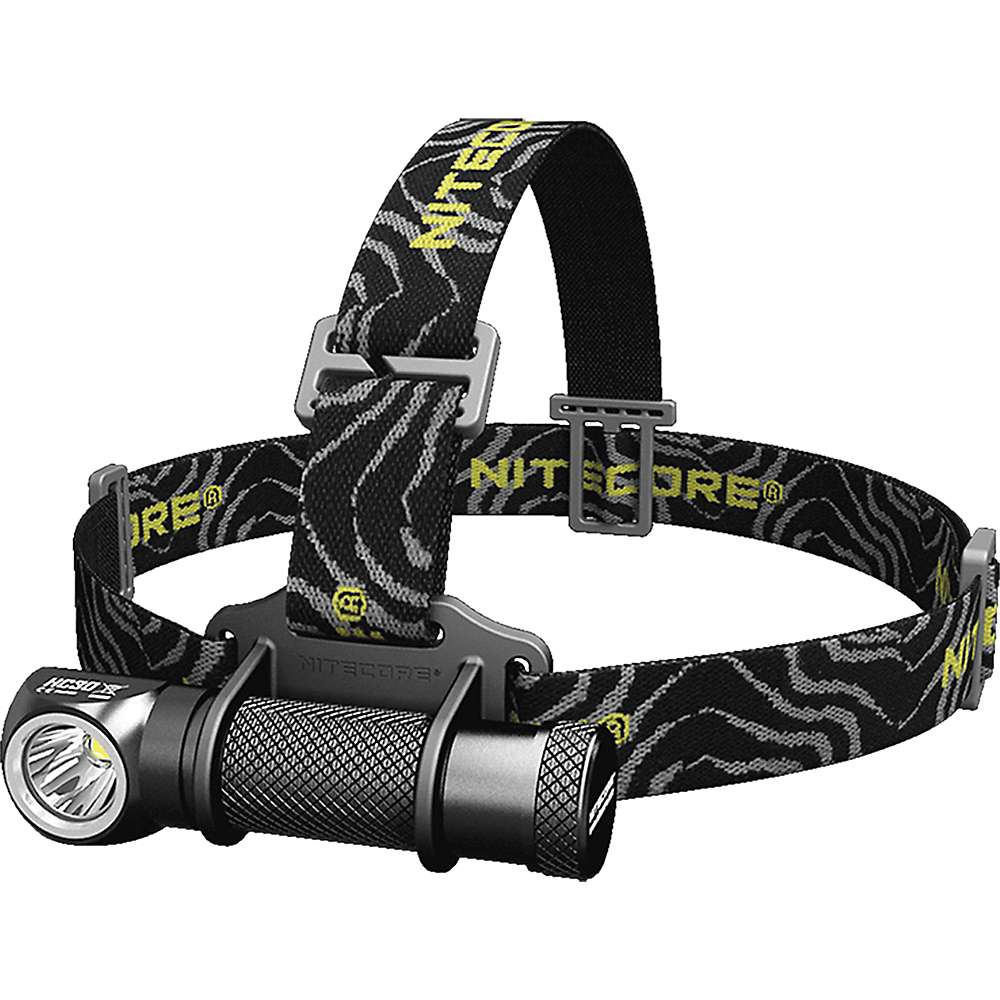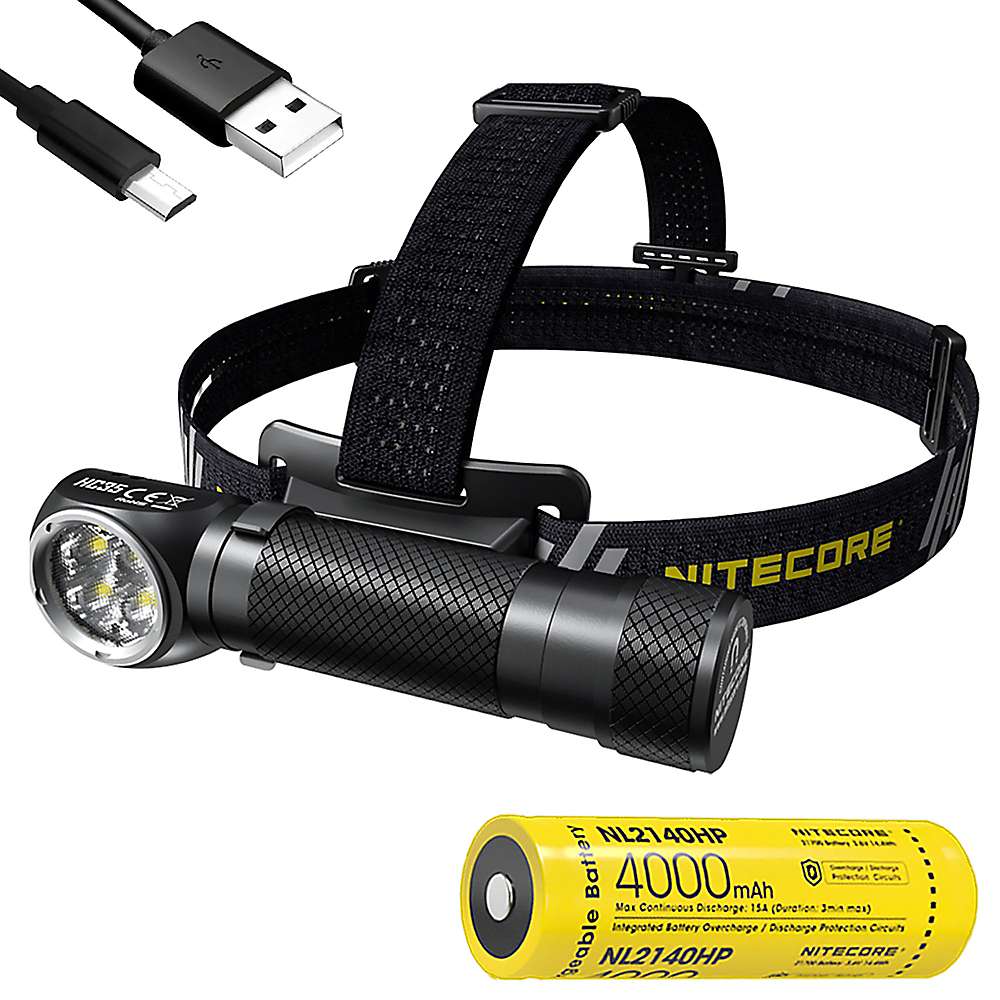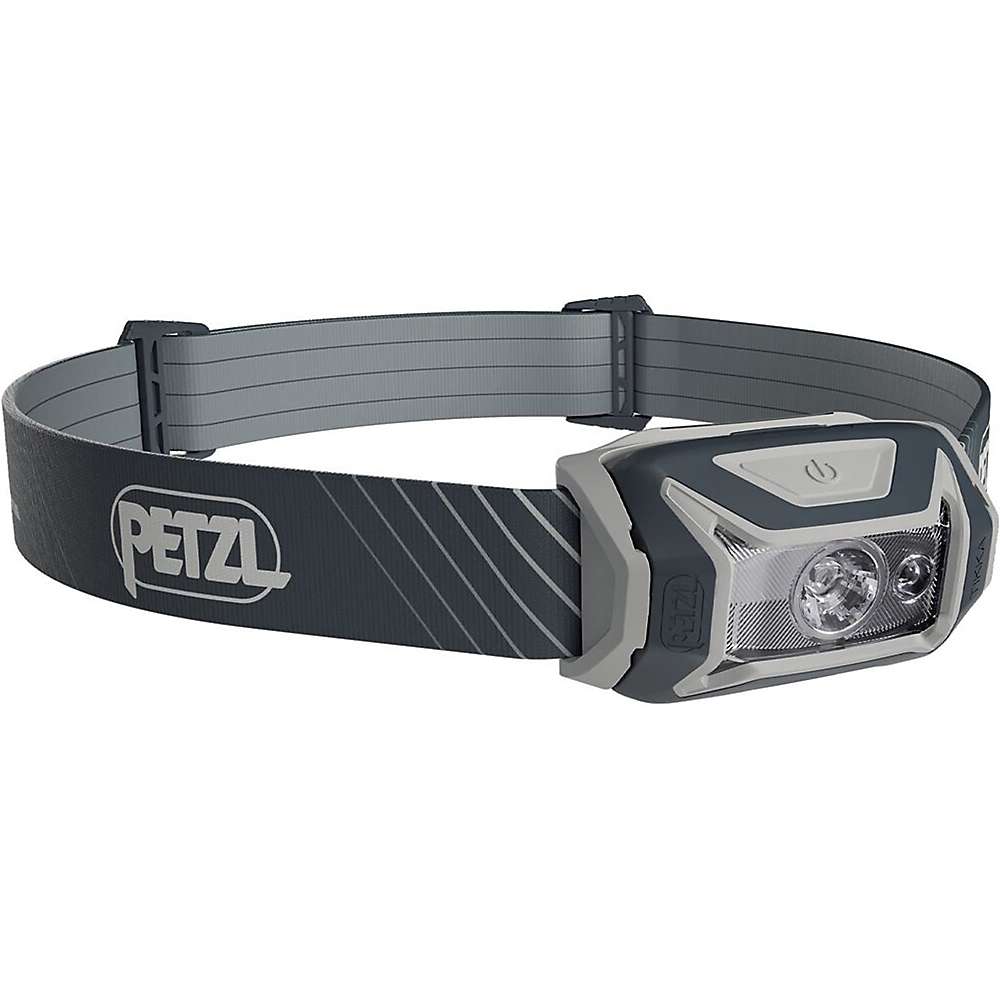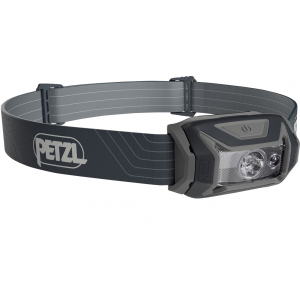- review: Arc’Teryx Gamma lightweight jacket – what OutdoorGearLab doesn’t tell you - October 22, 2025
- Has AI killed it all? The future of this website & my projects - October 12, 2025
- Review: Lono Wild – Best budget barefoot hiking shoes around? - April 30, 2025
Choosing a proper headlamp is almost as vital as choosing the right kind of clothing during the wet season, especially if you’re planning some late fall and winter adventures.
Depending on the activity you’re doing, I have a selection of three headlamps specialized for various situations and activities but of course, nothing is cast in stone. From snowboarding during the night to camping, speleology, and night rock climbing, these torches have seen and helped me see quite a few things.
The items I’m going to talk about are the super-strong Nitecore HC35, the immortal Petzl Tikka, and the underdog, Beal FF120, maybe one of the best headlamps I’ve had for rock climbing.
Table of Contents
Function & performance
All of the following items are considered budget headlamps and have some pros and cons but if you’re not planning to go diving in pitch-dark lakes, they are lovely for outdoor adventures.
Nitecore HC35
The Nitecore HC35 is a compact headlamp that offers a lot of power. Rated at 1000 lumens, this little fellow is as bright as my old Ford’s headlight. It offers a great field of visibility and has a rugged build so you don’t have to worry about throwing this little sucker in any kind of situation as long as it’s not a hot tub.
The small LED head features a CREE XM-L2 U2 which has five modes from low 70 lumens to turbo 1000 lumens. Also, it comes with a strobe and SOS function, all of which can be chosen with the click of a single button placed on top of the lamp.


The Nitecore HC35 is rated as splashproof with rubber rings around the screwing points so using it during a drizzle or snowy conditions is not an issue.
It comes with a double strap which offers extra stability considering it’s quite heavy compared to other models.
The nice part about it is that it comes with an extra clip accessory so you can place it on the strap of your backpack to be used as a signal light or secondary light.
I use this model whenever I go caving or during the winter because I like the extra visibility it offers.


The downside is that I always have to have an extra battery or a backup headlamp on me because it can eat a lot of power pretty quickly, especially if used in turbo mode.
While talking about cons, the main problem that I noticed on my headlamp is that unless you screw the battery real well, you can find yourself without power exactly when you need it most.
Petzl Tikka
Built to “access the inaccessible”, the Petzl Tikka headlamp is a real classic. Lightweight, easy to carry, and reliable, this little one has everything a backpacker needs packed in a cute and compact plastic casing.
Rocking a full 300-lumen brightness, the Petzl has a great beam of light perfect so you can find your way into the woods or around the campsite.


I usually have the Tikka as my spare headlight because whenever things go not as planned, this one won’t let me down.
The Petzl Tikka, just like the Nitecore HC35 is rated as splash-proof, and the casing although is plastic, I can tell you that it went through some rough stuff and still works wonderfully!
The LED on this headlamp works in three modes from low to high intensity, all of which can be chosen by the push of the top button.


Even if it runs on AAA batteries, I usually tend to use the Tikka mainly during the summer and autumn, leaving the more powerful headlights for winter but that’s my personal choice.


This model features three nice extras that you can’t find on the other two flashlights reviewed here and these are: a red LED light which you can choose by long pressing the main button, a “Noctilight” fitting which is a fluorescent circle that makes the lamp easy to find in the dark, AND, an Emergency whistle built into headstrap. So tons of so-called premium features in a budget-friendly headlamp.
It works well in low temps but I’ve had bad experiences with plastic in the winter and if I can avoid the unwanted hustle.
Beal FF120
A reliable and light partner for the outdoors, the Beal FF120 is really the underdog of this headlamp bonanza. Equipped with 3 LEDs and six functions, this is my go-to headlamp when I want to get funky.


So the Beal FF120 features two light sources, the first one being the central LED that provides a maximum 70-lumen brightness, which might not sound much, but it’s enough to find your way in the camp or to descend through the forest after a day at the crag.
The second source is the creme de la creme if you ask me. The two side LEDs provide great peripheral vision, enlarging the field of view quite considerably. It had two brightness modes, medium and high and they act as a flood light, without having bright spots. I’ve been rock climbing in the dark using this headlamp, and believe me, this function simply is a game changer because you won’t blind yourself to the reflection from the rock.


The Beal FF120 is closer to the Petzl Tikka regarding resistance and applicability, although it delivers less brightness.
Winner: When it comes to ruggedness, performance, and function, the Nitecore HC35 is most definitely the winner, being the brightest, and simplest of the models.
Although I love my Tikka, a couple of winters ago with two of the Nitecore headlamps we were able to make our private backcountry kicker entirely illuminated. So yes, resistant, bright, with multiple uses, clearly my money goes on the HC35.






Build quality
Regarding built quality, these headlamps come in a variety of casings, the straps being similar. An interesting thing that I observed is that even plastic can come in different strengths and qualities.
Nitecore HC35
The Nitecore HC35 is built really strong. It’s constructed using aerospace-grade aluminum alloy, which makes the casing practically bomb-proof. Regarding the glass, this is ultra-clear mineral glass with an anti-reflective coating. By using this kind of glass, not only is it really resistant to scratching, but it also shines really well.


The weak spot of this model is the bottom screw of the casing. I’ve noticed that it’s slightly weaker than the rest of the pieces, and from my experience, the spring that keeps the battery in place is kind of weak and the battery may need a tin-foil patch to help keep good contact and it won’t wobble inside.
Petzl Tikka
The Petzl Tikka is as simple as it gets. The plastic casing is good and scratch-resistant. You can take this baby wherever, put it through some rough situations, and it’ll be just fine.


The single strap doesn’t overstretch, being very reliable even if you put it over a helmet. Also, the other plastic elements are strong, flexible, and perform well in low temperatures, without cracking.
Beal FF120
Similar to the Tikka, the Beal FF120 features a plastic casing, pretty simple but it has a couple of flaws. The plastic isn’t as scratch-resistant as in the Tikka, mine has a couple of fine scratches due to transportation, wear and tear, and banging my head on various surfaces.


Unfortunately, the main button may have some contact issues, as it doesn’t always respond to commands, especially when the batteries are low.
The single strap isn’t as high-quality as in the other models, showing some signs of overstretching because of wearing it on a helmet.
Winner: In the build-quality game, the Nitecore HC35 is definitely a winner with its bombproof casing, even if it has a couple of flaws, they can easily be managed.
Battery life/charging
I prefer replaceable battery headlamps due to the fact you can simply hotswap in a second from dead to full or put the battery into a powerbank at a moments notice to charge a different device. I opt for 18650s as they’re more common around the world.
Nitecore HC35
With compatibility for 21700, 18650, and 2 x CR123 you have plenty of options for use. It charges via MicroUSB at the back.


The battery run-time according to the producer looks like this:
- Turbo: 2700 lumens, 45 minutes
- High: 800 lumens, 3 hours
- Mid: 270 lumens, 8 hours 15 minutes
- Low: 40 lumens, 52 hours
- Ultralow: 1 lumen, 1200 hours
|
|
$54.95 | Check prices |
|
|
$99.95 | Check prices |
|
|
$74.61
out of stock
|
Check prices |
|
|
out of stock
|
Check prices |
Petzl Tikka
The Petzl Tikka runs on regular AAA batteries, and I find that quite useful for journeys outside of NA/EU. Also, it successfully works their CORE Li-Ion batteries which perform better in low temps. Truly versatile.


According to the producer, this model has the following lighting performance:
- Max power: 350 lumens, 2 hours
- Standard: 100 lumens, 9 hours
- Low: 6 lumens, 120 hours
|
|
$39.06
4 new from $39.06
|
Check prices |
|
|
$59.95 | Check prices |
|
|
$24.63
out of stock
|
Check prices |
|
|
$44.95
out of stock
|
Check prices |
Beal FF120
The Beal FF120 headlamp runs on AAA batteries and it’s as simple as that. The producer doesn’t specify the run-time on this model but I can tell you from experience that I’ve been using it for at least 4 nights consecutively in the mountains and it worked like a charm with a usage time of around 3 hours per night. I’d also add that I love a good lighting and most of the times I run my lights on max.


Winner: Considering the size and power of an 18650 battery and even better, a 21700, it should be no surprise that the Nitecore HC35 wins in this department.
|
|
out of stock
|
Check prices |
|
|
out of stock
|
Check prices |
Size and portability
All of these models are easy to carry and have a pleasant size and feel but there are some specific differences.
They all occupy about the same volume in a pack, though the Nitecore is about 50 grams heavier – which for the ultralight weight weenies might make it a miss for them.
The Nitecore being different in shape and how it fits on the head as a result. Not as good for trail running and high-output activity due to the bob and bounce.






Nitecore HC35
This model is simply wonderful because of the clip accessory that makes it easy to be strapped on the backpack of wherever you need it.
Without the battery, it weighs 40.3 grams but when the battery is added, you can feel the extra weight at 139 grams and it shows. It’s not quite suited for trail running or high head-movement activity as a result.
Petzl Tikka
The Tikka is light, featuring a wonderful weight of only 86 grams and that is including the batteries. You can store it anywhere from your pocket to your backpack. The back clip is great when you need to store it on your back while riding a bike or want to be visible.
Versatile and applicable for many different activities without a problem.
Beal FF120
The middle brother, Beal FF120 is small and weight 10 grams more compared to the Tikka with batteries included. Rocking 96 grams, this extra weight is worth it considering it has two extra LEDs which give that splendid flood light.
Winner: The lightest, most performant and packable headlight from this stock, it most definitely the Petzl Tikka. However when it’s useful to have high-output, the HC35 is worth the small weight penalty.


Conclusion
I love all of my headlamps, and even if from this review the Beal FF120 didn’t come out as such a good option, I would most definitely recommend it, especially for rock climbers on a budget.
All in all, if you need some great power then the Nitecore HC series is simply wonderful. Although it’s a little heavy and expensive it comes with great advantages that outweigh the cons and useful for people who carry 18650 battery systems.
The Petzl Tikka is a tried, tested, trued, and tortured headlamp by thousands who swear by it. If simple, cost-effective, and versatile is what you search for, then it’s your match!


Bottom line is that I would recommend a headlamp for specific activities and things will run smoothly. I still stand my case that you should always bring a backup one and also spare batteries so you won’t have unpleasant surprises!
I personally would opt for the Nitecore HC65 V2 instead since it is similar to the HC35 but has the addition of a red-LED and moonlight mode LED. HOWEVER it had some bad reliability issues and passive battery drain problems..




















